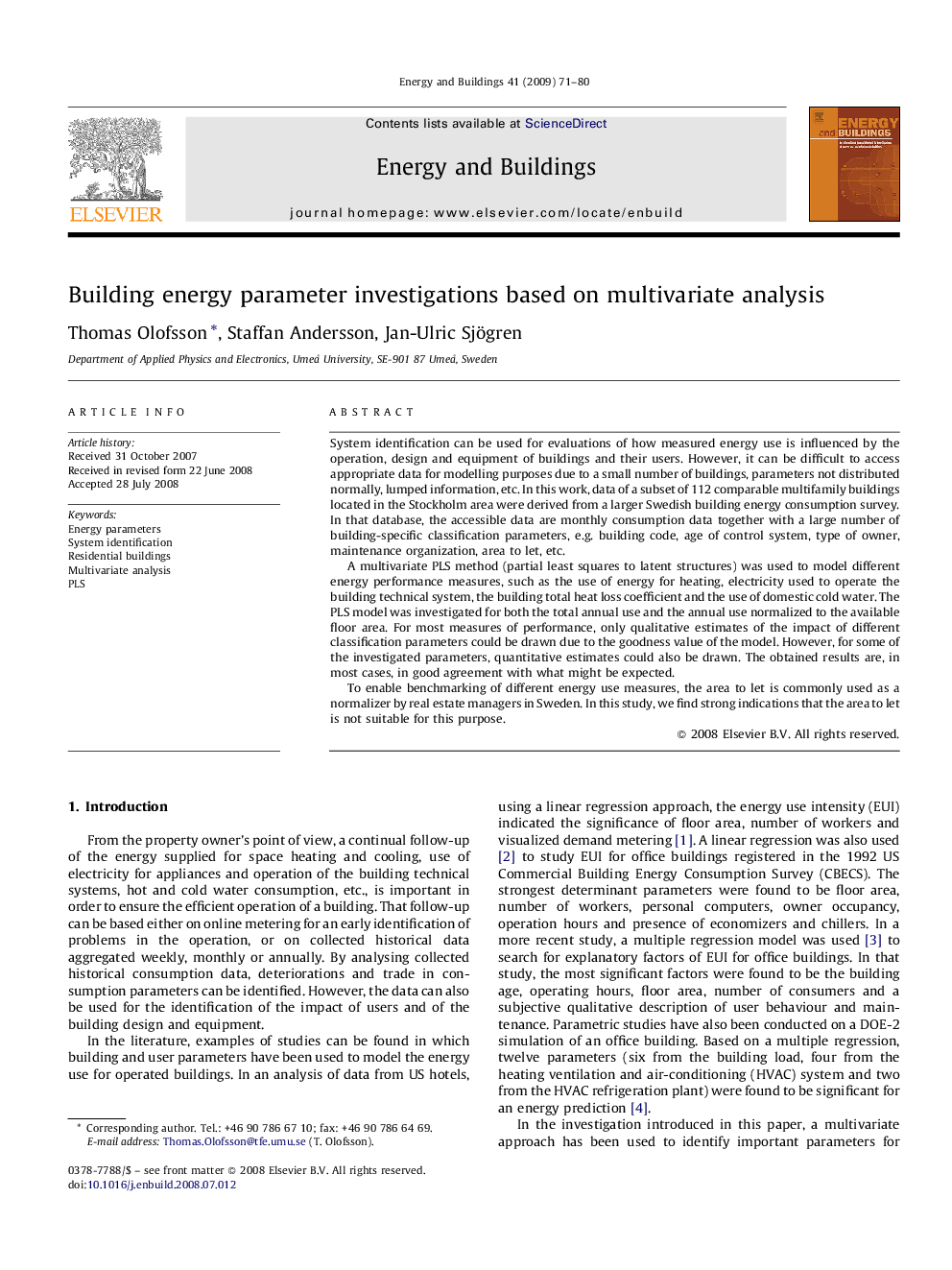| Article ID | Journal | Published Year | Pages | File Type |
|---|---|---|---|---|
| 265408 | Energy and Buildings | 2009 | 10 Pages |
System identification can be used for evaluations of how measured energy use is influenced by the operation, design and equipment of buildings and their users. However, it can be difficult to access appropriate data for modelling purposes due to a small number of buildings, parameters not distributed normally, lumped information, etc. In this work, data of a subset of 112 comparable multifamily buildings located in the Stockholm area were derived from a larger Swedish building energy consumption survey. In that database, the accessible data are monthly consumption data together with a large number of building-specific classification parameters, e.g. building code, age of control system, type of owner, maintenance organization, area to let, etc.A multivariate PLS method (partial least squares to latent structures) was used to model different energy performance measures, such as the use of energy for heating, electricity used to operate the building technical system, the building total heat loss coefficient and the use of domestic cold water. The PLS model was investigated for both the total annual use and the annual use normalized to the available floor area. For most measures of performance, only qualitative estimates of the impact of different classification parameters could be drawn due to the goodness value of the model. However, for some of the investigated parameters, quantitative estimates could also be drawn. The obtained results are, in most cases, in good agreement with what might be expected.To enable benchmarking of different energy use measures, the area to let is commonly used as a normalizer by real estate managers in Sweden. In this study, we find strong indications that the area to let is not suitable for this purpose.
